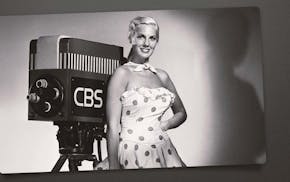Whether you are making some late additions to your gardens or planning for the future, create combinations of hummingbird-favorite plants to attract and support them with a season-long supply of nectar.
Hummingbirds consume an average of two to three times their weight in nectar each day. Feeders and an abundance of flowers throughout the season will support the hummingbirds and help attract them to your gardens.
Shrubs like azalea, lilac, weigela, buttonbush and rose of Sharon provide shelter for birds and nectar-filled flowers for hummingbirds and other pollinators to enjoy. The North American native honeysuckle vine adds vertical interest and hummingbird appeal even in small spaces.
Major Wheeler is a cultivar of the native honeysuckle vine that blooms all summer and is more resistant to powdery mildew. Watch as the hummingbirds munch on any aphids that attack this plant. They are great pest managers to have in the garden.
Another native vine, the trumpet vine, is a vigorous grower that can be trained into a small tree or onto a trellis. This plant will send out suckers requiring some regular maintenance. Be patient, as it can take several years for this vine to begin flowering. Avoid overfertilization, which results in an even bigger plant and no flowers.
Shorter vines, like the hummingbird's favorite cardinal vine, make excellent thrillers in containers. Train them onto a decorative support and grow them in their own pot or combine them with other annuals.
Include perennials for added seasonal beauty and nectar. Early blooming lungwort is shade-tolerant and provides some of the earliest nectar for these winged beauties. Leave the white or lavender flowers on your hostas for the hummingbirds.
Garden phlox and bee balm are both hummingbird favorites that add color and nectar to the garden. Look for powdery mildew-resistant varieties. North American native anise hyssop and liatris are two more favorites you may want to include.
Fill vacant spots in the garden, containers or hanging baskets with annuals known to attract hummingbirds. Fuchsias, begonia and impatiens are perfect for shady locations. Cupheas are often sold under the common names, tiny mice and cigar plant, and prefer a sunnier location. The taller blue horizon ageratum, geranium, bidens, tall verbena and petunias grow well in gardens and containers.
Both perennial and annual salvias attract hummingbirds. Place a pot or two of Black and Blue, Black and Bloom as well as Wendy's Wish near your windows, so you can enjoy the frequent visits of your resident hummingbirds.
Add one or more feeders to your landscape. Provide space between the feeders as hummingbirds are territorial. Make sure there is cover within 10 to 15 feet. Fill the container with a 1-part sugar to 4-part water solution. Replace the mixture and clean the feeders every few days. This provides additional food for the hummingbirds and viewing opportunities for you.
It may take a couple of years for the hummingbirds to find your nectar-filled garden. In the meantime, enjoy the flowers and other pollinators that stop by to dine.
Melinda Myers has written more than 20 gardening books, including "The Midwest Gardener's Handbook" and "Small Space Gardening." She hosts the Great Courses' "How to Grow Anything" DVD series and the syndicated "Melinda's Garden Moment" program on TV and radio.

Twin Cities native Dolores Rosedale, glamorous '50s TV model and actress, dies at 95


